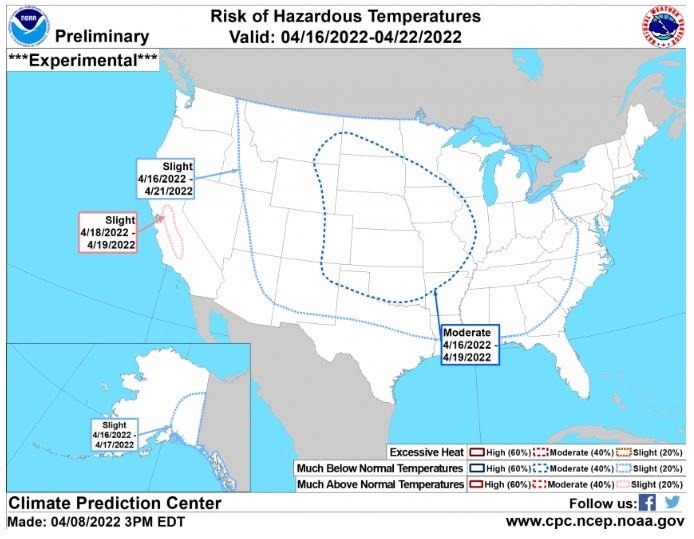By Mark Licht
Soil temperature is one of the most important factors to guide planting decisions. The rule of thumb is to wait until the upper 4 inches reach at least 50 degrees, with a warming temperature trend in the forecast. One way to track soil temperatures across Iowa is by using the soil temperatures map compiled by the Iowa Environmental Mesonet at Iowa State University. Updated daily in the spring, this map provides current measured and estimated soil temperatures for each county in Iowa.
The outlook for the next two weeks indicates a strong likelihood of well below average temperatures that will keep soils well below the optimum. Within this timeframe, there is a moderate chance of “much below average temperatures” from April 14th through the 19th. Planting into these cold soils will place seeds into very cold conditions for an extended period of time. Soils are unlikely to be excessively wet after the cold period and should be in better condition to plant.
Fields warm up and dry out differently based on factors such as soil texture, soil organic matter, soil moisture and surface residue coverage. Just because your neighbor may be preparing for or planting, does not mean all fields are ready to be planted. Daily fluctuations are common, especially in early spring. Historically, the optimum planting window for Iowa corn has been April 11 to May 18, with a shorter window in the northern part of the state compared to the south.
Last year, there was a cold spell with frost damage the over Memorial Day weekend. That is pretty uncommon to have frost injury that late into may. The average last spring freeze date (30oF) varies across Iowa from late March in southern Iowa to late May in northern Iowa. Determine your frost risk using the Freeze Date Tool developed by the Midwestern Regional Climate Center and the Midwest Climate Hub.
We want to make sure that we have a soil temperature that is warm enough for the seed to germinate and also for the shoot to emerge, without having to worry about heavy frosts or low emergence rates. Planting early ensures you will not be planting late, but it does not mean that you will not experience damage or have to replant. Planting into cooler soil conditions extends the time from planting to emergence. This puts the seed at greater risk of seed mortality, loss of seedling vigor, and seedling disease infection.
Pay attention to the forecast and hold off on corn and soybean planting until there is a rising trend for several days. This 50oF and rising soil temperature trends gives the best chances for excellent stand establishment and seedling vigor.

Source : iastate.edu